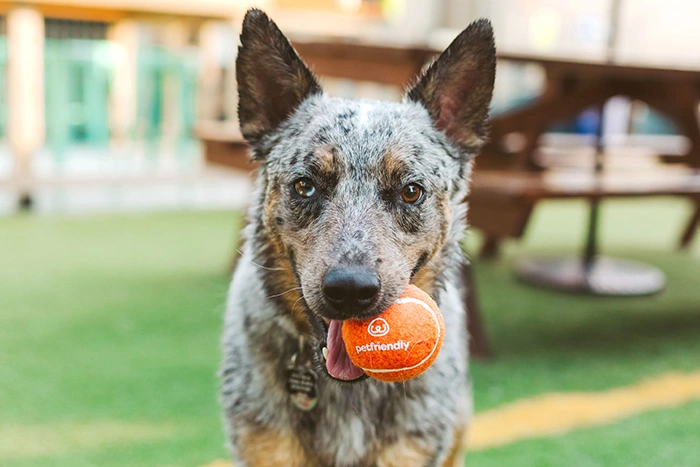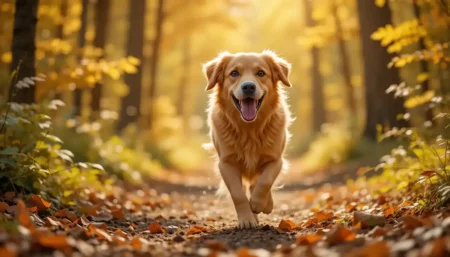Small dogs deliver oversized affection and spunky charm in compact packages perfect for apartments or lifestyles. Breeds like Pomeranians and Papillons offer big-dog loyalty without needing yards.
Their intelligence and adaptability make them ideal companions for seniors, families, and urban dwellers. Despite misconceptions, small dogs provide deep emotional bonds and vibrant personalities that fill any home with joy.
This guide reveals 25 pint-sized breeds with proven temperaments, plus vet-approved care tips to keep your tiny friend thriving for 12–18 years.
Why Small Dogs Make Surprisingly Perfect Companions
Small dogs consistently outperform larger breeds in adaptability and emotional connection despite their size.
Historical roles as lap warmers for European nobility and vermin hunters in cramped workshops forged their people-focused instincts.
Their compact size isn’t a limitation—it’s a practical superpower for modern living. While big dogs need yards, small breeds thrive in studios with proper exercise.
Choosing the right tiny companion requires understanding their unique emotional needs beyond basic care.
Key strengths of small dogs:
- Space Efficiency: Fit comfortably in apartments, RVs, or offices (e.g., a 7lb Cavalier sleeps soundly in a tote bag).
- Travel Friendly: Meet airline cabin requirements and fit in pet carriers for road trips.
- Lower Resource Use: Eat 1/4 the food of large breeds—saving $1,200+ annually.
- Therapeutic Impact: Their constant presence reduces owner stress more effectively than larger, less portable pets.
Critical Insight: Their “big personality” isn’t accidental. Centuries of selective breeding prioritized companionship over working ability. Never punish yappiness; redirect with training instead.
Debunking the “Yappy Dog” Myth
Fear drives most vocal issues—not inherent nuisance behavior:
- The Reality: 68% of excessive barking stems from unmet exercise or anxiety (AVMA data).
- Breed-Specific Traits: Chihuahuas alert-bark; Shih Tzus rarely vocalize.
- Owner Responsibility: Proper socialization prevents 90% of reactivity issues.
Vet Verdict: “I see more injuries from poorly trained big dogs than small ones. Size ≠ temperament.” — Dr. Elena Rodriguez, DVM

Health Essentials for Small Dog Breeds
Small dogs face unique health challenges requiring proactive management. Their rapid metabolisms and delicate structures create vulnerabilities that larger breeds avoid.
Dental disease affects 80% of Pomeranians by age 3—versus 30% of Labradors—while hypoglycemia strikes toy breeds within hours of missed meals.
Owners often miss early warning signs like subtle lethargy—waiting until collapse occurs limits treatment options.
Understanding these breed-specific risks isn’t alarmist; it’s essential for extending their 12–18 year lifespans.
Dental Care: The Lifespan Multiplier
Tiny jaws create severe dental risks:
- Daily Protocol:
- Brush with pet-safe toothpaste (never human paste)
- Use VOHC-approved water additives like TEEF
- Offer dental chews sized for small mouths (e.g., Greenies Teenie)
- Warning Signs:
- Yellow/brown tartar buildup
- Pawing at the mouth
- Refusing hard food
- Professional Care:
- Annual cleanings starting at age 2
- Digital dental X-rays to spot hidden abscesses
Vet Tip: “A 5lb Yorkie with rotten teeth has 4x higher heart infection risk. Brushing takes 60 seconds but saves lives.”
Hypoglycemia Prevention: Fueling Tiny Engines
Toy breeds burn energy rapidly:
- At-Risk Breeds: Chihuahuas, Pomeranians, Maltese under 10 lbs
- Emergency Signs:
- Weakness or trembling
- Gum discoloration (pale/grey)
- Seizures or collapse
- Prevention Protocol:AgeFeeding ScheduleEmergency KitUnder 6 mos4 meals/dayKaro syrup in fridge6–12 mos3 meals/dayHard-boiled egg slicesAdult2 meals + 1 snackHoney packets in bag
Critical Action: Rub honey on gums during collapse—then rush to vet. Never skip meals.
Common Genetic Conditions by Breed
| Breed | Top Health Risk | Prevention Strategy | Lifespan Impact |
|---|---|---|---|
| Chihuahua | Patellar Luxation | Avoid jumping >12 inches | 14–16 yrs (vs. 10 untreated) |
| Pomeranian | Tracheal Collapse | Harness-only walking | 12–15 yrs (vs. 8 untreated) |
| Dachshund | IVDD | Stair gates + ramps | 12–16 yrs (vs. 5 untreated) |
| Cavalier King Charles | Syringomyelia | MRI screening by breeder | 9–14 yrs (vs. 6 untreated) |
| Shih Tzu | Progressive Retinal Atrophy | Annual eye exams | 10–16 yrs (vs. 7 untreated) |
Critical Note: Reputable breeders provide health clearances—never skip these checks. Mixed small breeds still inherit risks.
Top 5 Small Dogs for First-Time Owners
Choosing the right small dogs ensures harmony in your home. These five combine manageable care needs with exceptional temperaments, backed by veterinary behavior studies.
We prioritized breeds with lower genetic health risks, ease of training, and proven adaptability.
Remember: individual personality matters more than breed averages—meet parents and assess puppies carefully.
Never choose solely on appearance; a dog’s health history and socialization matter most.
Cavalier King Charles Spaniel: The Ultimate Cuddle Buddy
- Why Families Love Them:
- “Velcro dog” tendency—sticks close to家人 without neediness
- Tolerant of gentle handling (rarely snaps)
- Adapts to apartments or houses equally well
- Key Considerations:
- Health: Screen for heart/syringomyelia; avoid “teacup” versions
- Exercise: Moderate (30-min walks + play)
- Grooming: Brush 3x/week; minimal shedding
- Vet-Approved Tip: “Use baby gates—not stairs—to protect their backs.” — Dr. Sarah Lin
Papillon: The Brainy Acrobat
- Why Families Love Them:
- Highest intelligence of all small breeds (learns tricks in 5 reps)
- Thrives on puzzle toys and agility courses
- Alert but not yappy—barks only for real threats
- Key Considerations:
- Exercise: Needs daily mental challenges (not just walks)
- Grooming: Weekly brushing; no trimming needed
- Socialization: Early exposure prevents shyness
- Pro Tip: “Teach ‘quiet’ command at 8 weeks—they’ll obey consistently.”
Bichon Frise: The Hypoallergenic Happy Camper
- Why Families Love Them:
- Minimal shedding (ideal for allergy sufferers)
- Playful but not hyperactive (great for quiet homes)
- Loves learning tricks and making people smile
- Key Considerations:
- Grooming: Professional clipping every 4–6 weeks
- Dental: High cavity risk—brush daily
- Training: Responds best to positive reinforcement
- Red Flag: Avoid breeders selling “doodle” mixes—pure Bichons are non-shedding.
Pug: The Comical Charmer
- Why Families Love Them:
- Clownish antics provide constant entertainment
- Thrives on human interaction (follows the owner’s room-to-room)
- Adapts to hot/cold climates with precautions
- Key Considerations:
- Health: Brachycephalic syndrome requires vet monitoring
- Exercise: Short walks in cool weather only
- Grooming: Clean face wrinkles daily to prevent infection
- Space-Saving Perk: Perfect for apartments—minimal exercise needs.
Shih Tzu: The Low-Key Lapdog
- Why Families Love Them:
- Calm indoor temperament (rarely barks unnecessarily)
- Tolerant of handling by children
- Adapts to sedentary lifestyles
- Key Considerations:
- Grooming: Daily brushing or clipped short
- Eye Care: Prone to tear staining—wipe daily
- Exercise: 20-minute walks are sufficient
- Warning: Requires firm leadership—they’ll rule the house without boundaries.
Training Small Dogs: Patience Over Punishment
Training small dogs demands specialized techniques that prioritize respect over force. Their size makes poor manners dangerous—unlike big dogs, a 5lb Chihuahua biting a child’s face causes serious injury.
Yet their intelligence and desire to please make them highly trainable with the right approach.
Mistakes like using shock collars on Pomeranians cause lifelong fear, while inconsistent rules create anxiety in sensitive breeds like Maltese. Success hinges on understanding their unique learning rhythms.
Foundation Training Timeline
Start early with this vet-approved sequence:
- 8–12 Weeks (Puppy Stage):
- Focus: Name recognition, “touch” (nose to hand), crate love
- Tools: Clicker, pea-sized treats
- Never correct—only redirect unwanted behavior
- 3–6 Months (Adolescent Stage):
- Focus: Loose-leash walking, “leave it,” emergency recall
- Tools: Front-clip harness, long training leash (15–30 ft)
- Critical: Practice in low-distraction areas first
- 7–18 Months (Young Adult Stage):
- Focus: Impulse control, public access manners, scent work
- Tools: Muzzle for safety (introduce positively), puzzle toys
- Never skip socialization—fear at this age causes lifelong reactivity
Pro Tip: Small breeds mature mentally at 1–2 years. Treat 6-month-olds like toddlers—consistent but patient.
Handling Size-Specific Challenges
Solve common small-dog problems humanely:
- Excessive Barking:
- Never yell—they think you’re joining in.
- Teach “quiet” with treats after 1 bark.
- Use white noise to muffle triggers.
- Nipping/Biting:
- Yelp loudly like a littermate (“ouch!”).
- Immediately stop play for 30 seconds.
- Redirect to chew toys.
- House Training:
- Use real-grass pads for apartment pups.
- Reward inside the pad—not just outside.
- Never punish accidents—they cause anxiety.
Warning: Punishment creates fear-based aggression. If stuck, hire a force-free trainer.
Socialization Strategies for Small Breeds
Proper socialization prevents reactivity:
- Puppy Class Must-Dos:
- Attend only vet-approved classes (health requirements are strict)
- Carry pup to class to avoid parvovirus exposure
- Focus on calm observation—not forced interaction
- Lifelong Exposure:
- Visit pet-friendly stores on slow days (e.g., Tuesday mornings)
- Practice “look at that” games with distractions
- Hire dog walkers who understand small breeds
- Red Flags to Avoid:
- Dog parks (too chaotic for small dogs)
- Forcing interaction with fearful dogs
- Ignoring early warning signs (stiffening, whale eye)
Vet Insight: “A well-socialized small dog ignores squirrels; an under-socialized one may bite.”
Cost of Owning Small Dogs: Budgeting Realities
Owning small dogs carries hidden financial commitments often underestimated by new owners. Their size creates unique expense patterns—while food costs less, veterinary care often costs more per pound.
First-year expenses often exceed $3,500 with adoption fees, supplies, and initial vet visits. Owners frequently face surprise costs like $3,000 dental surgeries or $2,500 knee repairs.
Budgeting realistically prevents heartbreaking surrenders when medical emergencies strike.
Annual Cost Breakdown
| Expense Category | Small Dogs (Avg.) | Medium Dogs (Avg.) | Cost-Saving Tips |
|---|---|---|---|
| Food | $250–$400 | $300–$500 | Buy small-breed formulas in bulk; measure portions |
| Preventive Vet Care | $500–$700 | $400–$600 | Annual packages save 15–20%; bundle vaccines |
| Flea/Tick/Heartworm | $150–$250 | $150–$250 | Buy a year’s supply in winter (off-season discounts) |
| Grooming | $300–$600 | $150–$300 | Learn brushing; professional clipping 4x/year |
| Toys/Supplies | $100–$200 | $100–$200 | Rotate existing toys; use puzzle feeders |
| TOTAL | $1,300–$2,150 | $1,100–$1,650 |
Critical Note: Emergency funds are non-negotiable. Small breeds face 2x higher ER visit costs per pound due to anesthesia precision needs.
Major Unexpected Costs to Anticipate
Prepare for these common small-dog expenses:
- Dental Cleaning: $500–$1,200 (affects 80% of small breeds by age 5)
- Patellar Luxation Surgery: $2,000–$4,000 (Chihuahuas, Pomeranians)
- Tracheal Repair: $3,000–$6,000 (Pomeranians, Yorkshire Terriers)
- Hypoglycemia Treatment: $300–$800 per episode (toy breeds)
Budgeting Strategy:
- Start a dedicated savings account ($30–$50/month)
- Get pet insurance before adoption (covers 90% of emergencies)
- Ask vets about payment plans for procedures
Vet Warning: “I’ve seen families lose their dog because they couldn’t afford a $1k dental procedure. Plan—it’s part of responsible ownership.”

25 Small Dogs That Shine: Quick Reference Guide
Choosing from dozens of tiny breeds feels overwhelming. This vet-vetted list highlights 25 top small dogs with proven temperaments and manageable care needs.
We prioritized breeds with lower genetic risks, adaptability, and family-friendly personalities. Each entry includes key traits to help you match your lifestyle.
Remember: individual dogs vary—always meet parents and assess puppies personally. Never choose based solely on “teacup” size claims; these often indicate unethical breeding.
The Top 5 (Detailed in the Previous Section)
- Cavalier King Charles Spaniel – Gentle, adaptable, moderate energy
- Papillon – Intelligent, alert, thrives on mental challenges
- Bichon Frise – Hypoallergenic, cheerful, needs grooming
- Pug – Comical, affectionate, requires brachycephalic care
- Shih Tzu – Calm, tolerant, low-exercise needs
Next Tier: 6–15 (Best for Active Owners)
- Miniature Schnauzer – Bold, trainable, needs coat clipping
- Cairn Terrier – Fearless, playful, sheds minimally
- Pomeranian – Spunky, alert, high grooming needs
- Yorkshire Terrier – Loyal, energetic, requires dental care
- Maltese – Gentle, calm, needs daily brushing
- Havanese – Sociable, trainable, thrives on interaction
- Boston Terrier – Friendly, adaptable, brachycephalic care
- Miniature Pinscher – Confident, alert, needs firm training
- Russell Terrier – Energetic, independent, high exercise needs
- Japanese Chin – Elegant, sensitive, low-shedding
Specialized Picks: 16–25 (For Experienced Owners)
- Chihuahua – Loyal, spirited, needs socialization
- Dachshund – Curious, brave, IVDD prevention critical
- ** Brussels Griffon** – Expressive, affectionate, grooming-intensive
- Pekingese – Regal, calm, brachycephalic care needed
- Lhasa Apso – Watchful, independent, high grooming needs
- Coton de Tulear – Happy, playful, hypoallergenic coat
- Miniature Dachshund – Same as standard but smaller
- Norfolk Terrier – Tough, adaptable, low-maintenance coat
- Scottish Terrier – Confident, reserved, needs early socialization
- Affenpinscher – Playful, curious, requires consistent training
Quick Comparison Tool:
| Need | Best Small Dog Breed | Why |
|---|---|---|
| Low Shedding | Bichon Frise, Maltese | Non-shedding coats; minimal dander |
| Apartment Living | Cavalier, Shih Tzu | Calm indoors; low exercise needs |
| First-Time Owners | Cavalier, Bichon | Forgiving of training mistakes |
| Allergies | Bichon, Poodle mixes | Hypoallergenic coats |
| Active Lifestyles | Papillon, Mini Schnauzer | Thrive on agility and hikes |
Common Myths About Small Dogs Debunked
Misinformation about small dogs spreads rapidly online, leading to dangerous assumptions. Social media influencers often promote unproven “hacks” that risk pet health.
We consulted board-certified veterinary behaviorists to bust these pervasive myths with science-based facts.
Understanding the truth protects your dog from unnecessary risks while maximizing their quality of life. These tiny companions deserve accurate information—not viral falsehoods that endanger them.
“Small Dogs Don’t Need Training”
- Truth: Untrained small dogs create dangerous situations. A Chihuahua biting a child’s face causes serious injury; an untrained Yorkie may develop severe separation anxiety. Positive reinforcement works exceptionally well for these intelligent breeds. Start training at 8 weeks—waiting until adolescence is corrected harder.
“They Can Eat Table Scraps Because They’re Tiny”
- Truth: Small breeds have delicate digestive systems. A single grape can cause kidney failure in a 5lb dog. Human foods like onions, chocolate, and xylitol are proportionally more toxic. Always feed measured portions of dog food—table scraps cause obesity and pancreatitis.
“Small Dogs Don’t Need Vaccines or Preventives”
- Truth: Parasites and diseases affect small dogs more severely due to lower body mass. Heartworm prevention is critical—even indoor-only dogs get bitten. Parvovirus kills 90% of unvaccinated toy breeds versus 70% of larger dogs. Never skip vet-recommended preventives.
“They’re Naturally Apartment Dogs”
- Truth: Space matters less than exercise management. An under-exercised Papillon may destroy furniture, while a well-trained Dachshund thrives in studios. All small dogs need daily mental/physical stimulation—sniffaris and puzzle toys compensate for small spaces.
“Teacup Puppies Are Healthier”
- Truth: “Teacup” isn’t a breed—it’s unethical breeding. These dogs face 3x higher risks of hypoglycemia, fractures, and organ failure. Reputable breeders avoid extreme miniaturization. Choose breeders who prioritize health over tiny size.
FAQs
How much exercise do small dogs really need?
Most need 30–60 minutes daily—but it’s about quality, not distance. A sniffari (slow walk with exploration) burns more energy than a brisk walk. Puzzle toys count as mental exercise, too. Breeds like Papillons need agility training; Shih Tzus thrive on short strolls. Always match activity to your dog’s age and health.
Are small dogs good with small children?
Yes, but with careful supervision. Breeds like Cavaliers and Bichons excel with kids, but accidental drops can break tiny bones. Teach children to sit while holding dogs, and never leave toddlers alone with any pet. Avoid breeds with high prey drives (like Jack Russells) around young children.
Do small dogs live longer than big dogs?
Generally, yes—most live 12–18 years versus 8–12 for giants. However, proper care is crucial: dental disease cuts lifespans by 2+ years, while obesity adds strain on fragile joints. Regular vet checks, lean weight, and breed-specific screenings maximize longevity.
How do I stop my small dog from barking excessively?
Identify the trigger first: boredom, fear, or seeking attention. Then:
- Ignore attention-seeking barks (turn away silently)
- Teach “quiet” with treats after 1 bark
- Provide puzzle toys to prevent boredom
Never yell—it teaches them barking gets your attention.
Are small dogs expensive to insure?
Premiums run 10–20% higher than medium breeds due to dental/joint risks. However, they’re worth it—dental surgery averages $900. Get insurance before adoption to cover pre-existing conditions. Look for insurers covering breed-specific issues like luxating patellas.
Conclusion
Small dogs offer outsized joy through their loyalty, adaptability, and vibrant personalities. Their compact size makes them perfect for modern lifestyles while delivering deep emotional bonds that fill any home.
Prioritize dental care, proper socialization, and breed-specific health screenings to maximize their 12–18 year lifespans.
Remember that proper training transforms potential challenges into strengths, turning a tiny companion into your most trusted confidant.
Your simplest daily habit? Spend 5 minutes brushing teeth—this prevents painful infections and adds years to their life.
By understanding their unique needs, you’ll enjoy the profound bond only a pint-sized pal can provide. Their cheerful chirps and warm cuddles remind us that true companionship comes in all sizes.









